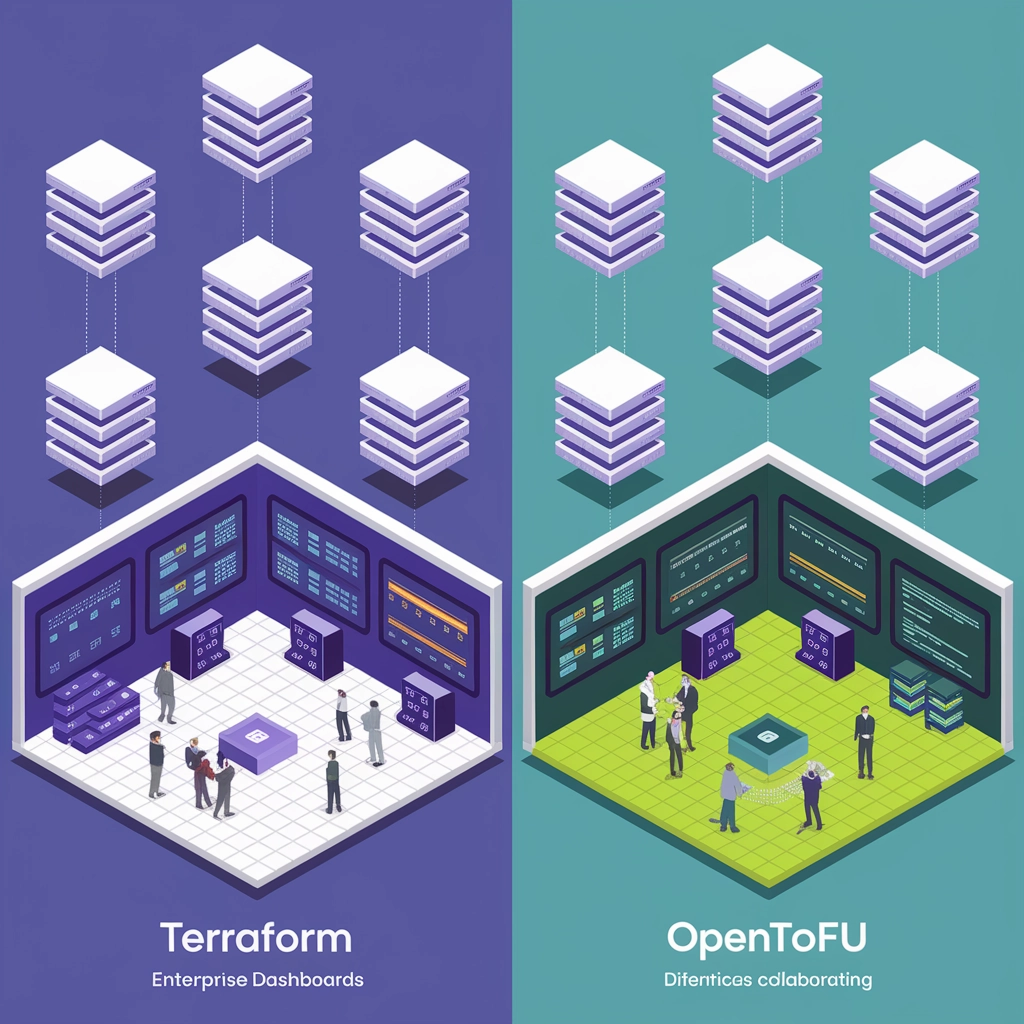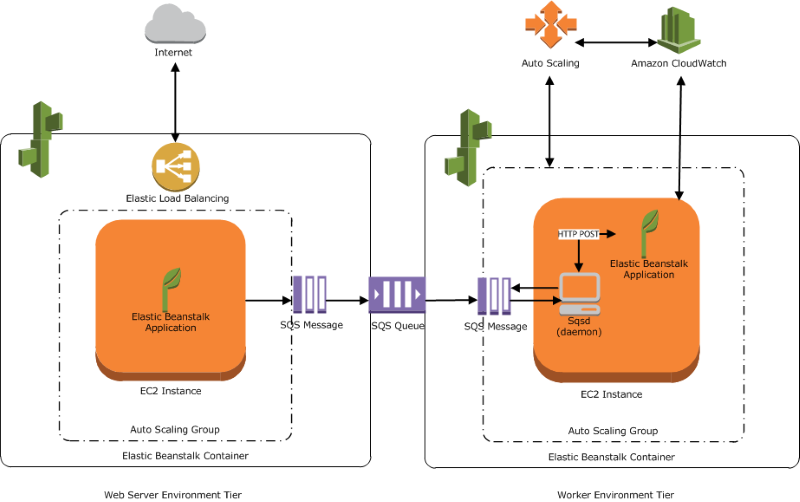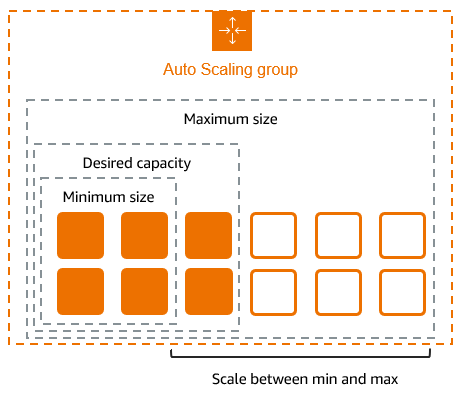Introduction
Infrastructure as Code (IaC) has revolutionized how organizations deploy and manage their infrastructure. In the IaC landscape, Terraform has long been the dominant player, allowing teams to define infrastructure using declarative configuration files. However, a significant shift occurred in 2023 when OpenTofu emerged as an open-source alternative. This fork of Terraform's codebase has gained traction, leaving many DevOps professionals wondering: which tool should I choose?
This article breaks down the key differences, advantages, and disadvantages of both OpenTofu and Terraform, helping you make an informed decision for your infrastructure management needs.
The Fork in the Road: How OpenTofu Emerged
Before diving into comparisons, it's worth understanding why OpenTofu exists in the first place. In August 2023, HashiCorp announced a licensing change for Terraform, moving from the Mozilla Public License 2.0 (MPL 2.0) to the more restrictive Business Source License (BSL). This change raised concerns about Terraform's open-source future.
In response, the Linux Foundation launched OpenTofu as a community-driven fork of Terraform, maintaining the MPL 2.0 license. This move was supported by major industry players including Gruntwork, Spacelift, and env0, who wanted to preserve the open-source nature of the tool that many organizations had built their infrastructure around.

Key Differences Between OpenTofu and Terraform
1. Licensing
OpenTofu: Remains under the Mozilla Public License 2.0 (MPL 2.0), which is a true open-source license that gives users the freedom to use, modify, and distribute the software without significant restrictions.
Terraform: Now uses the Business Source License (BSL), which includes limitations on how the software can be used commercially, particularly by competing services. After a specified period (usually four years), the code transitions to an open-source license.
2. State Encryption
OpenTofu: Supports state encryption out of the box, adding an important security layer for sensitive infrastructure configurations.
Terraform: Does not offer native state encryption, requiring users to implement additional security measures when handling state files containing sensitive information.
3. Commercial Offerings
Terraform: Offers Terraform Cloud as a commercial product with features like remote state management, policy as code (Sentinel), team collaboration tools, and a private registry.
OpenTofu: While OpenTofu itself doesn't have a proprietary commercial offering, it's supported by third-party services like env0 and Spacelift that provide similar functionality to Terraform Cloud.
4. Community and Governance
OpenTofu: Governed by the Linux Foundation with a transparent, community-driven development process. Decisions are made through open discussions and consensus.
Terraform: Development is primarily controlled by HashiCorp, with the company making most strategic decisions about the product's direction.
Pros and Cons: OpenTofu
Pros:
-
True Open-Source Freedom: The MPL 2.0 license ensures long-term freedom from commercial restrictions.
-
Enhanced Security Features: Native state encryption gives OpenTofu an edge for organizations handling sensitive configuration data.
-
Community Governance: The open governance model means features and fixes are prioritized based on community needs rather than corporate strategy.
-
Seamless Migration: 100% compatibility with existing Terraform configurations makes switching straightforward for current Terraform users.
-
No Vendor Lock-in: Reduced risk of being tied to a single vendor's ecosystem or pricing structure.
Cons:
-
Newer Project: Despite being a fork of mature code, OpenTofu as an organization is still establishing itself.
-
Smaller Ecosystem: While growing rapidly, the community of plugins, extensions, and learning resources is not yet as extensive as Terraform's.
-
Less Commercial Support: Organizations requiring enterprise-grade support might find fewer options compared to HashiCorp's offerings.
Pros and Cons: Terraform
Pros:
-
Market Leadership: As the original tool, Terraform has widespread adoption, extensive documentation, and a mature ecosystem.
-
Terraform Cloud: The integrated commercial platform offers convenient workflows for teams needing collaboration features.
-
HashiCorp Provider Ecosystem: Over 3,000 providers maintained by HashiCorp and partners ensure broad compatibility with virtually any service.
-
Professional Support: Enterprise support packages are available directly from HashiCorp.
-
Established Release Cycle: Predictable updates and improvements follow HashiCorp's well-defined product cycles.

Cons:
-
Licensing Restrictions: The BSL imposes limitations on how Terraform can be used, particularly by competitive services.
-
Corporate Control: Strategic decisions may prioritize HashiCorp's business interests over community preferences.
-
Missing Security Features: The lack of native state encryption is a notable security gap.
-
Potential Cost Increases: As a commercial entity, HashiCorp may adjust pricing or introduce new paid features over time.
When to Choose OpenTofu
OpenTofu is particularly well-suited for:
1. Organizations Concerned About Licensing Freedom
If your organization values software freedom or is concerned about potential future licensing changes, OpenTofu's commitment to MPL 2.0 provides long-term stability and predictability.
2. Security-Focused Deployments
The native state encryption capability makes OpenTofu an excellent choice for organizations working with sensitive infrastructure configurations, especially in regulated industries.
3. Companies With Existing Terraform Investments
If you've already built substantial infrastructure using Terraform but are concerned about the licensing changes, OpenTofu offers a seamless migration path without requiring code rewrites.
4. Community-Oriented Development Philosophies
Organizations that value community-driven software development and want to contribute to the direction of the tool will find OpenTofu's governance model more aligned with these values.
When to Choose Terraform
Terraform remains the better choice for:
1. Enterprise Teams Requiring Comprehensive Support
Organizations that need guaranteed support levels, especially in mission-critical environments, may prefer HashiCorp's enterprise support packages.
2. Teams Already Invested in Terraform Cloud
If you've built workflows around Terraform Cloud and its unique features, the switching costs might outweigh the benefits of moving to OpenTofu.
3. Conservative Technology Adopters
Organizations with conservative approaches to technology changes might prefer to stick with Terraform's established track record rather than moving to a newer fork.
4. Organizations Without Licensing Concerns
If the BSL restrictions don't impact your use case, and you're comfortable with HashiCorp's direction, there may be less incentive to switch.

Migration Considerations
For teams considering a move from Terraform to OpenTofu, here are some key points to consider:
-
Configuration Compatibility: OpenTofu is designed to be fully compatible with existing Terraform configurations, making the initial migration straightforward.
-
State Files: State files can be used interchangeably between the tools, allowing for a phased transition.
-
Provider Plugins: OpenTofu uses the same provider ecosystem, so your existing providers should continue to work.
-
CI/CD Integration: Update your automation pipelines to use OpenTofu instead of Terraform commands. Most changes are simply replacing
terraformwithtofuin your scripts. -
Team Training: While the tools function similarly, ensure your team understands the differences and the reasons for the migration.
Future Outlook
The infrastructure as code space continues to evolve rapidly. Here's what to watch for:
-
Feature Divergence: Over time, expect OpenTofu and Terraform to develop distinct features as they follow different development philosophies.
-
Community Growth: OpenTofu's community is expanding quickly, which will likely accelerate feature development and provider support.
-
Enterprise Adoption: Watch for more large organizations publicly adopting OpenTofu as a sign of its long-term viability.
-
HashiCorp's Response: HashiCorp may adjust its licensing or features to respond to competition from OpenTofu.
Conclusion
Both OpenTofu and Terraform offer powerful solutions for infrastructure as code, but with different approaches to licensing, governance, and features. Your choice between them should be guided by your organization's specific needs, values, and existing investments.
For organizations prioritizing open-source freedom, community governance, and enhanced security features like state encryption, OpenTofu represents an attractive option. For those valuing enterprise support, deep integration with HashiCorp's ecosystem, and established market presence, Terraform remains compelling.
The good news is that the technical similarities between the tools make it relatively easy to migrate between them if your needs change. This flexibility allows teams to make the best choice for their current situation without feeling locked into a decision permanently.
Whether you choose OpenTofu or Terraform, both tools will help you achieve the core benefits of infrastructure as code: consistency, repeatability, and efficiency in managing your cloud resources.
For more information on Terraform and infrastructure as code best practices, check out our other resources on Terraform.




